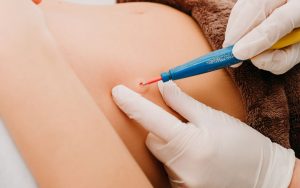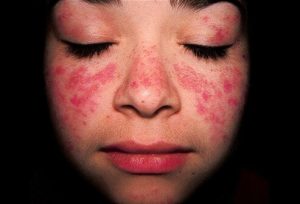If you’ve noticed dark patches, uneven skin tone, or stubborn marks that just won’t fade, you’re not alone. Skin pigmentation is one of the most common skin concerns, especially among women living in sunny, humid climates. But not all pigmentation is the same, and that means the treatment shouldn’t be either. Whether it’s melasma, sun spots, or post-acne marks, understanding what’s behind the discolouration is the first step to clearer, more even-toned skin.
Let’s Talk About the Types of Pigmentation
Melasma
Melasma shows up as symmetrical brown or greyish patches, often on the cheeks, forehead, nose, or upper lip. It’s common among women, especially during pregnancy or when taking hormonal contraceptives, and it tends to worsen with sun exposure.
What helps:
- Topical brightening agents (like azelaic acid, tranexamic acid, or hydroquinone under supervision)
- Chemical peels to gently exfoliate the top layers of skin
- Non-ablative lasers or light-based treatments designed for pigmentation (especially those suitable for Asian skin)
- Strict sun protection
Melasma is a long game, it takes a consistent, gentle approach and patience.
Sun Spots (Solar Lentigines)
These flat, brown spots tend to pop up on areas frequently exposed to the sun, like your face, hands, shoulders, and chest. They’re more common as we age and can become darker over time without sun protection.
What helps:
- Pigment-targeting laser treatments
- Intense pulsed light (IPL) therapy
- Prescription-strength topical creams
- Daily use of SPF 50+
Sun spots are usually easier to treat than melasma, especially when caught early.
Post-Acne Marks (Post-Inflammatory Hyperpigmentation)
Ever had a pimple that left a dark mark long after it healed? That’s post-inflammatory hyperpigmentation (PIH). It’s more common in medium to darker skin tones and can occur after any skin trauma, not just acne.
What helps:
- Gentle chemical peels
- Light-based therapy or fractional laser for stubborn marks
- Topical treatments with ingredients like niacinamide, vitamin C, or retinoids
- Avoiding further skin irritation or picking
The key with PIH is consistency and avoiding anything too harsh that might inflame the skin further.
Finding the Right Treatment for Your Skin
When it comes to pigmentation, the “right” treatment depends on a few things:
- The type of pigmentation
- Your skin tone
- Whether the discolouration is superficial or deeper in the skin
That’s why it’s important to see a qualified dermatologist. They can assess your skin and customise a treatment plan that addresses your concern without risking further pigmentation or irritation.
What About Over-the-Counter Products?
While there are plenty of brightening creams available, not all are effective, and some can even damage your skin if used incorrectly. Ingredients like vitamin C, licorice extract, niacinamide, and alpha arbutin can help, but results take time.
When used alongside in-clinic treatments, these can help maintain results and keep pigmentation at bay.
Consistency is Key, And So is Sun Protection
No matter the type of pigmentation, sunscreen is non-negotiable. UV rays are a major trigger for all forms of pigmentation, so daily SPF 50+ is essential, even when indoors or on cloudy days.
And remember: pigmentation doesn’t fade overnight. It takes time, the right products, and often a little help from in-clinic treatments to see visible results.
Not Sure Where to Start? Let’s Talk
If you’ve been trying to fade dark spots on your own with little success, you don’t have to keep guessing.
At Joyce Lim Skin & Laser Clinic, we offer a range of treatments tailored to your specific pigmentation concern and skin tone. Dr Joyce Lim brings over 30 years of dermatological experience to help women treat pigmentation safely and effectively.
Book a consultation today and let us guide you toward brighter, more even skin, one step at a time.











